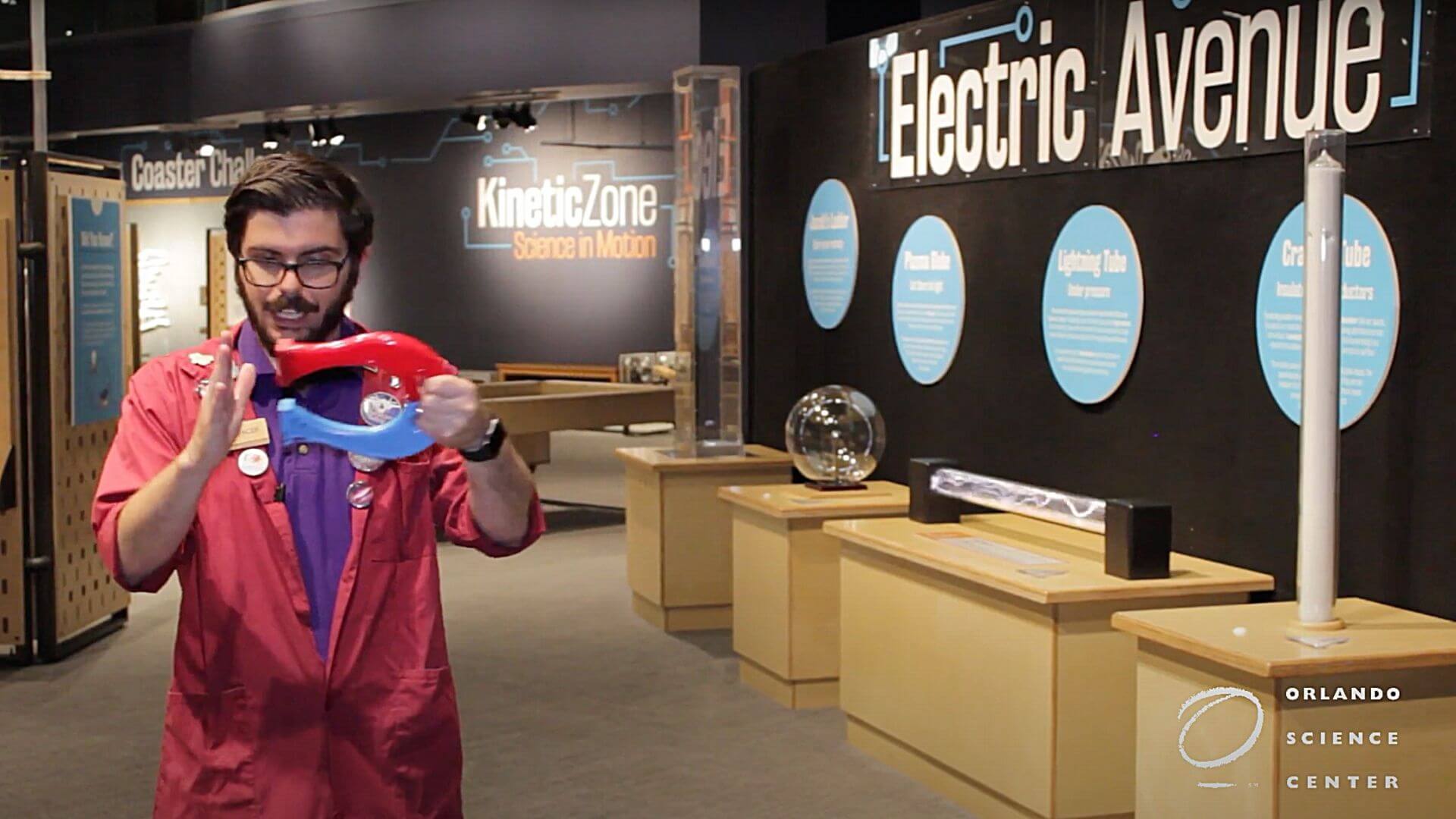We'd like to thank our partner, Florida Prepaid, for sponsoring this colorful activity! Today’s young scientists are tomorrow’s college graduates. Saving early for college sends your child a powerful message that you believe in their future — and want them to avoid debt later. Learn more about Florida Prepaid’s College Savings Plan at myfloridaprepaid.com.

Join us for a fun physics lesson and find out if all metals are magnetic!
Have you ever walked around your house or classroom with a magnet to see what it can pick up? If not, give it a try! We'll wait...
You probably picked up different kinds of metal objects like paper clips or keychains. But were are all the metals you tried to pick up magnetic? What about a penny or some aluminum foil? Probably not. That's because there are only three naturally occurring metals in nature: iron, nickel, or cobalt. But that doesn't mean other metals can't become magnetic.
Using one of our most popular exhibits, the Ring Launcher, we'll learn about a really cool concept called electromagnetic induction and find out whether or not all metals are magnetic.
Watch the video and read along as we find out if all metals are magnetic!
What are Electrons?
To learn about electromagnetic induction, we need to start with electrons. Electrons are subatomic particles, which means they are even smaller than an atom! They can be thought of as absurdly tiny bundles of negative charges that zip around the nucleus of atom. When electrons flow in one direction, we call it a current, which transmits energy in the form of electricity! A current also creates a magnetic field that will attract or repel nearby magnets.
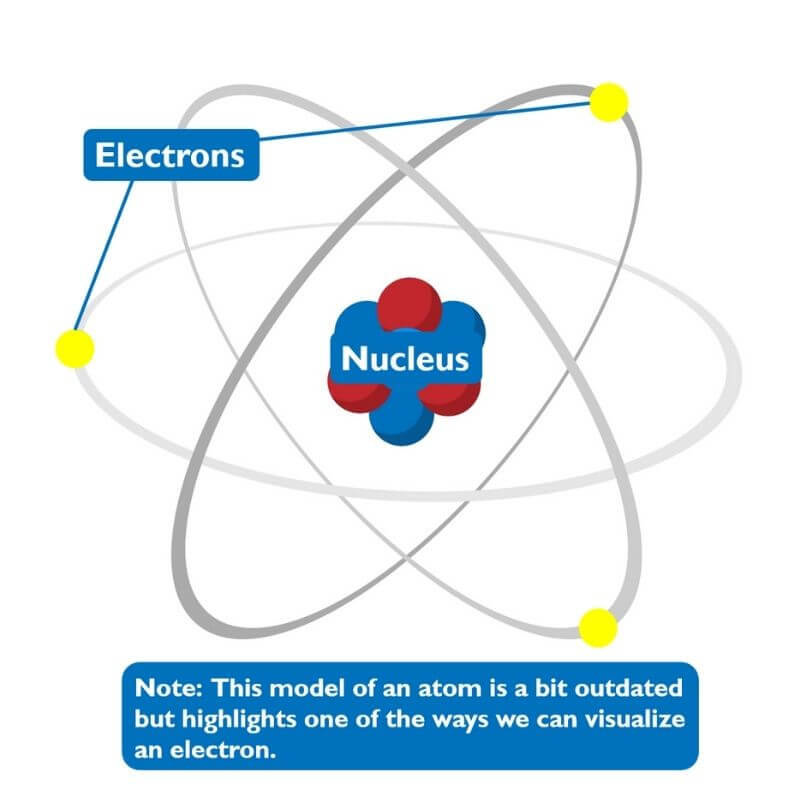
What is Metal?
We encounter metals every day, but what IS metal? It is a special kind of material where electrons can flow freely across the surface. When there is a magnetic field nearby, it causes the free-moving electrons to zip all across the surface, which creates a current inside the metal.
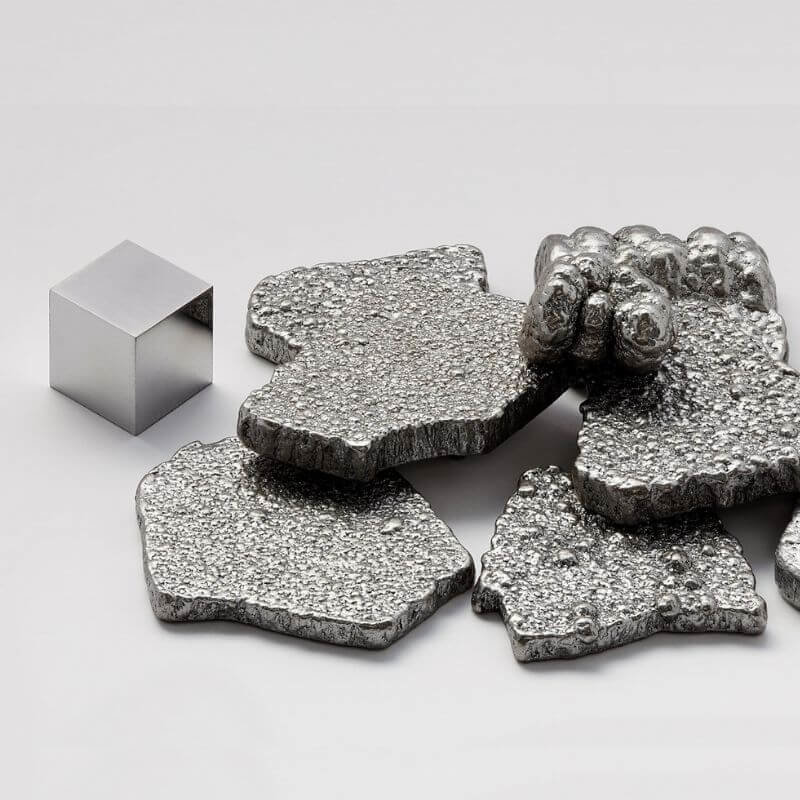
What is Electromagnetic Induction?
Like specified above, magnetic fields force electrons to move (remember that moving electrons are called a current) … and that currents create a magnetic field. So, if you send electricity through a wire, the magnetic field produced by the current will cause electrons in a nearby metal to move, which also creates an entirely different magnetic field. These two magnetic fields are always opposite each other, which means they repel away from one another. We say that the original current induced a magnetic field in the metal, which is where the term “electromagnetic induction” comes from!
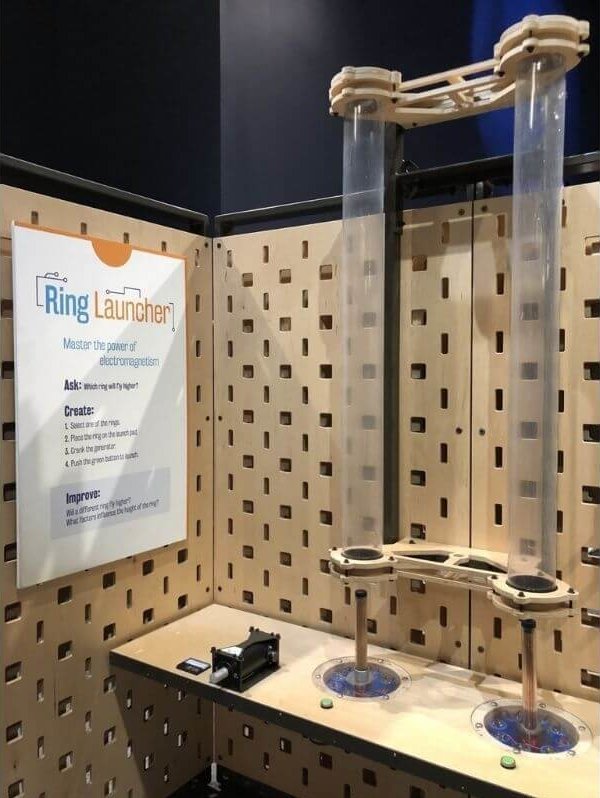
So what is Happening in the Ring Launcher?
If you look carefully at the base of the ring launcher, you’ll see a bunch of wires and a copper tube sticking out. When the button is pressed, electrons flow through these wires and tube, which creates a current. That current induces a magnetic field in the aluminum rings, which creates an opposing magnetic field and forces the ring to launch in the air!
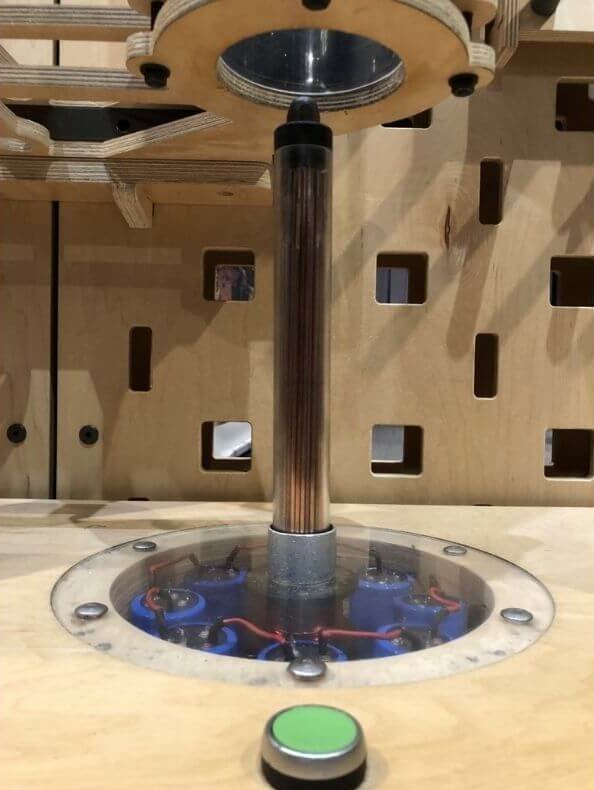
Orlando Science Center is full of awesome experiments and demonstrations that rely on concepts like electromagnetic induction. Next time you’re here, try and think about what makes all the cool things happen across the building. In fact, try to think about all the amazing science behind all the amazing things that happen in your day-to-day life!
Want to try another fun experiment?
